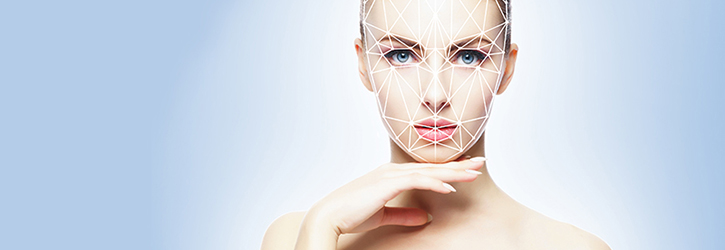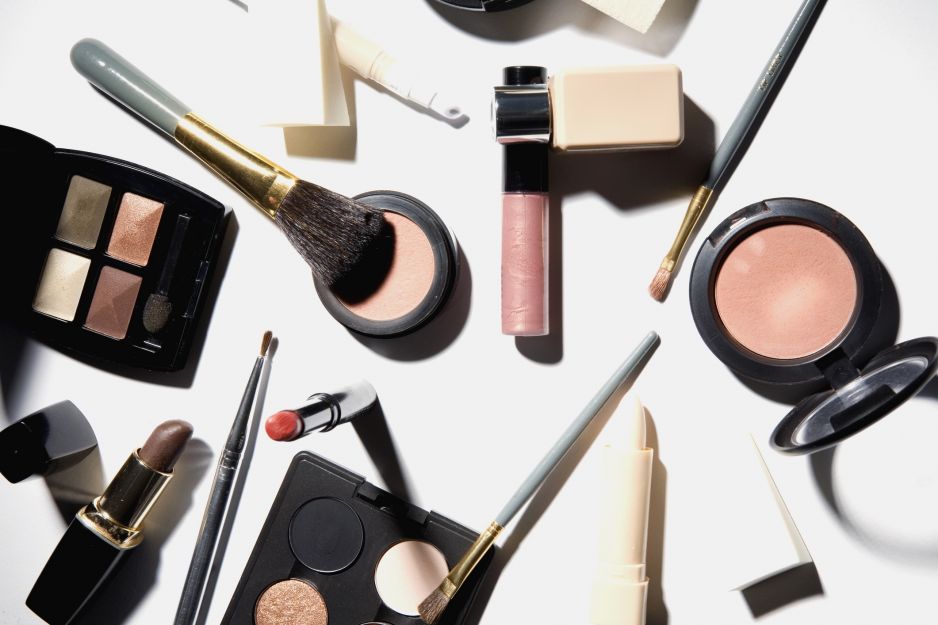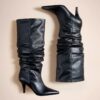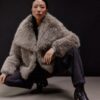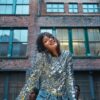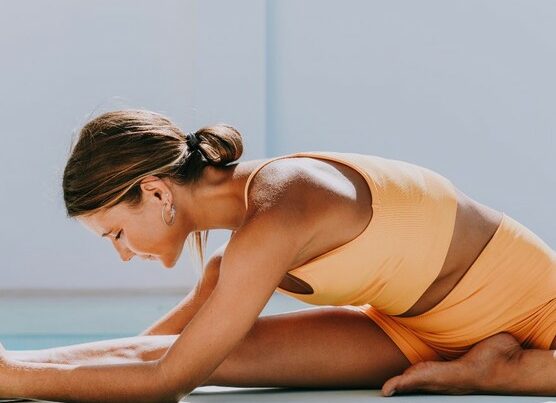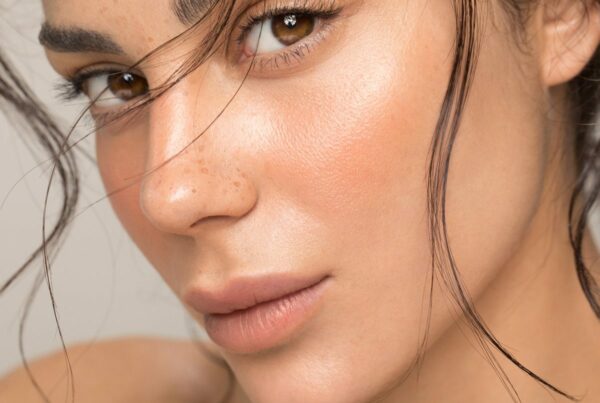In today’s ever-evolving beauty landscape, understanding the importance of sustainability and inclusivity is essential for consumers and brands alike. This article delves into the latest trends in the beauty industry, highlighting innovations such as biodegradable packaging, circular economy practices, and personalized beauty experiences enabled by technology. By exploring these critical areas, readers will gain insights into how brands are responding to the demand for eco-conscious products and inclusive representation, ultimately guiding them toward making informed choices in their beauty routines.
Table of Contents
Future Trends in Sustainable Beauty Innovation
The beauty industry is undergoing a significant transformation, driven by an increasing demand for sustainability and ethical practices. With consumers becoming more conscientious about their choices, brands are innovating to meet these new expectations. In this section, we will explore the latest trends that are shaping the future of sustainable beauty, focusing on innovative practices, materials, and consumer engagement.
1. Eco-Friendly Ingredients and Biodegradable Formulations
A key trend in sustainable beauty innovation is the shift towards eco-friendly ingredients and biodegradable formulations. Brands are no longer just focusing on how their products make consumers look; they are also being held accountable for their environmental impact. This has led to the rise of brands that prioritize natural, organic, and responsibly sourced ingredients that minimize harm to the planet.
- Ingredient Transparency: Consumers are demanding transparency regarding what goes into their products. Brands like Mad Hippie provide detailed information about their ingredients, helping consumers make informed choices.
- Biodegradable Packaging: Many companies are investing in biodegradable or recyclable packaging. This move not only reduces waste but also aligns with the eco-conscious values of their clientele. Brands such as Lush have taken bold steps in this direction.
2. Upcycling and Circular Economy Practices
The concept of a circular economy is gaining traction as a sustainable alternative to the traditional linear economy. More beauty brands are incorporating upcycled materials into their product lines, which not only enhances resource efficiency but also inspires innovation in product development.
- Innovative Use of Waste: Brands like Belong utilize by-products from food industries—such as coffee grounds and fruit peels—in their beauty formulations, transforming waste into valuable ingredients.
- Take-Back Programs: Many companies have begun implementing take-back initiatives, where consumers can return used products for recycling or repurposing. This model encourages consumer participation in sustainability efforts, fostering a sense of community and responsibility.
3. Technology-Driven Sustainable Solutions
Advancements in technology are playing a crucial role in the evolution of sustainable beauty. From artificial intelligence-driven formulations to blockchain for supply chain transparency, tech innovations are paving the way for responsible beauty practices.
- Personalized Products: AI technology enables brands to create personalized skincare regimens that are tailored to individual needs while using minimal resources. This not only enhances the consumer experience but also reduces wasted products.
- Blockchain for Transparency: Brands are increasingly using blockchain technology to trace the origins of their ingredients. This ensures ethical sourcing and allows consumers to trust that the products they purchase align with their values.
4. Community-Driven Initiatives and Education
Creating a sustainable beauty culture also involves educating consumers about the importance of sustainability. Many brands are engaging their customers through initiatives that promote eco-conscious practices.
- Workshops and Events: Companies are hosting events that teach consumers how to use products sustainably, reduce waste, and recycle effectively. This not only educates the audience but also creates a deeper connection with the brand.
- Partnerships with Environmental Organizations: Collaborations with NGOs focused on sustainability help brands build credibility and foster trust with consumers, establishing a community around shared values.
5. The Role of Social Media in Shaping Sustainable Beauty Trends
Social media is a powerful tool that significantly impacts consumer behavior and trends in the beauty industry. Brands leveraging platforms like Instagram and TikTok are not only promoting their products but also advocating for sustainability through targeted campaigns and influencer partnerships.
- Influencer Collaborations: Many influencers are using their platforms to highlight brands that prioritize sustainability, thus steering their followers towards eco-friendly beauty choices.
- Viral Challenges: Initiatives encouraging sustainable practices, such as #NoWasteChallenge, are gaining attention, prompting consumers to rethink their beauty routines and share their experiences.
As the beauty industry continues to evolve, the focus on sustainable innovation will only intensify. Brands that embrace these trends and prioritize eco-conscious practices will likely thrive in this new market landscape, as consumers increasingly seek out products that align with their values.
Digital Technology and Personalized Beauty Experiences
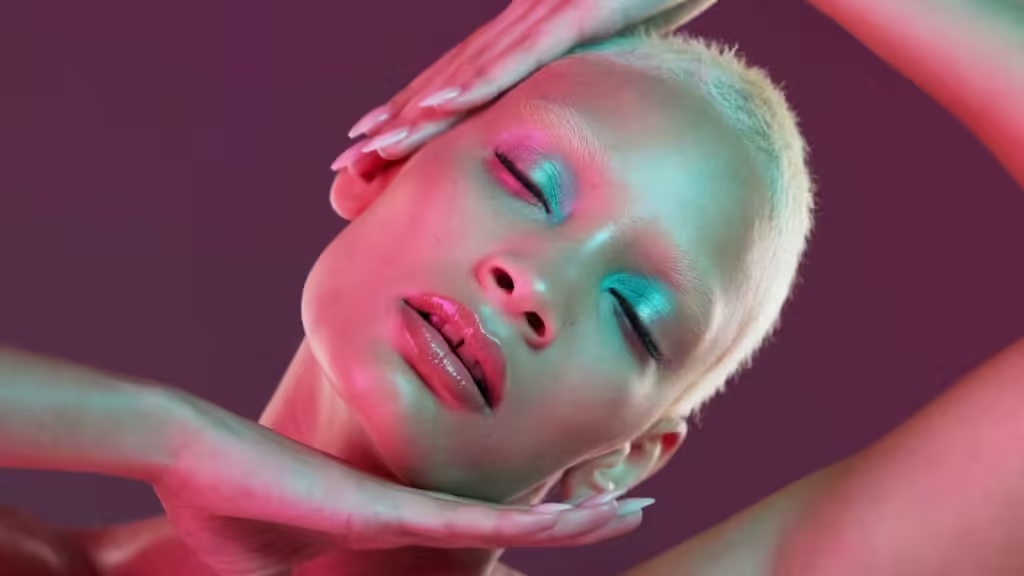
The beauty industry is undergoing a profound transformation fueled by advances in digital technology, allowing brands to offer truly personalized beauty experiences. This evolution is not just about having multiple product options but about using data-driven insights to create tailored solutions that resonate with individual needs and preferences. The fusion of technology and beauty is paving the way for a more inclusive, diverse, and representative beauty landscape.
Understanding Personalized Beauty
Personalized beauty refers to the customization of cosmetic products and experiences based on personal preferences and characteristics. This concept has been greatly enhanced by digital technology, which allows for detailed consumer analysis through various data collection methods. Here’s how technology is shaping personalized beauty:
- AI and Machine Learning: Brands utilize AI algorithms to analyze consumer data and predict trends. This enables companies to recommend products that meet an individual’s unique skin type, tone, and beauty preferences.
- Skin Analysis Tools: Mobile apps and in-store devices can assess skin conditions and give tailored product recommendations. Tools like L’Oréal’s Skin Genius use images from smartphones to offer personalized skincare routines.
- Custom Formulations: Companies like Function of Beauty allow customers to create custom shampoo and conditioner formulas, providing an unprecedented level of personalization in hair care.
The Role of Virtual Try-Ons
One of the standout features of digital technology in beauty is the introduction of virtual try-on solutions. With augmented reality (AR), consumers can test makeup products in real-time through their mobile devices or in-store kiosks. Major brands like Sephora have adopted AR technology to enhance the shopping experience, allowing customers to visualize how different shades work with their skin tones before making a purchase. This capability has transformed consumer confidence, minimizing the fear of buyer’s remorse.
Beauty Subscriptions and Data-Driven Personalization
Beauty subscription boxes have capitalized on the demand for personalized experiences by curating products based on individual preferences. Services like Ipsy and GlossyBox rely on consumer surveys and feedback to tailor their offerings, ensuring that subscribers receive products that cater to their beauty needs. By analyzing preferences over time, these subscription services continuously enhance the personalization of their new offerings.
Catering to Diversity with Advanced Algorithms
The merging of digital technology and beauty is also leading the charge towards inclusivity. Brands can utilize advanced data algorithms to understand product demand across diverse demographics, ensuring that all consumers feel represented. This is particularly important in an industry traditionally criticized for a lack of diversity. For example:
- Color Match Technology: Tools that match foundation shades to broader skin tones help brands offer comprehensive shade ranges, celebrating diversity in beauty.
- Feedback Loops: Continuous consumer feedback enables brands to optimize product lines, making sure offerings resonate with various audiences.
Conclusion and the Future of Personalized Beauty
As technology progresses, the beauty industry is set to embrace even more innovative approaches in creating personalized experiences. The integration of AI, AR, and consumer-centric data analysis will likely redefine beauty shopping, ensuring that every beauty routine is as unique as the individual behind it. With an ever-growing emphasis on inclusivity and the power of representation, the beauty landscape promises to be more dynamic and diverse than ever before.
For more insights into the intersection of technology and beauty, you might find Digital Beauty a useful resource.
The Rise of Inclusive Beauty and Empowering Representation
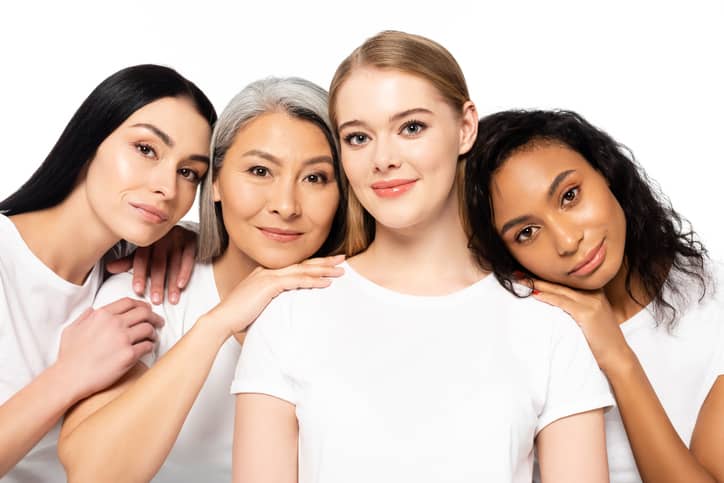
The beauty industry is undergoing a profound transformation, characterized by a shift towards inclusive beauty and a commitment to empowering representation. This revolution is not just a trend; it’s a necessary evolution that recognizes the rich diversity of beauty in all its forms. As consumers become more vocal about their needs and expectations, brands are re-evaluating their marketing strategies and product offerings to embrace inclusivity on a deeper level.
Understanding Inclusive Beauty
Inclusive beauty refers to the industry’s attempt to cater to individuals of different backgrounds, ethnicities, body types, genders, and abilities. This encapsulates everything from product formulation to marketing campaigns. The focus is to ensure that everyone, no matter their unique characteristics, feels represented and valued. Here are some core aspects of what makes beauty inclusive:
- Diversity in Product Lines: Brands are now expanding their shade ranges to include deeper and lighter tones, recognizing the diverse skin tones of their customers. Major companies, like Fenty Beauty, have set industry standards by offering a broad spectrum of shades.
- Gender-Neutral Marketing: With the decline of rigid gender norms, beauty brands are creating products designed for anyone, regardless of gender identity. This move diversifies user engagement and dismantles stereotypes.
- Representation in Advertising: Consumers are increasingly looking for brands that represent their identities in promotional material, from age diversity to showcasing models with disabilities.
The Importance of Representation
Representation matters because it fosters a sense of belonging and acceptance among consumers. When people see themselves reflected in marketing, it validates their existence and promotes self-esteem. For instance, campaigns featuring influencers of various body sizes and ethnicities challenge traditional beauty standards, thereby creating a more inclusive environment. This change is not just social but also economical; studies show that brands engaging in authentic representation benefit from increased customer loyalty and sales.
Consumer Empowerment Through Inclusive Beauty
The rise of inclusive beauty signifies consumers taking the reins of their beauty narratives. Social media platforms empower individuals to share their unique beauty journeys, promote their chosen products, and amplify underrepresented voices. This grassroots movement encourages brands to listen and adapt to consumer feedback genuinely. The result is a more interactive relationship between brands and their customers, fostering an environment of collaboration instead of one-sided marketing.
Spotlighting Brands Championing Inclusivity
A number of forward-thinking brands are at the forefront of this movement, leading by example:
- Rare Beauty: Founded by Selena Gomez, Rare Beauty emphasizes mental health and emphasizes inclusivity through diverse advertising and product offerings.
- e.l.f. Cosmetics: Known for its affordable price points, e.l.f. has embraced a diverse range of products and actively involves consumers in its decision-making processes.
- Glossier: This beauty brand has garnered attention for its community-driven approach that showcases real people instead of traditional models, reflecting true beauty.
The Future of Inclusive Beauty
As brands continue to recognize the importance of empowering representation, the future of beauty looks more diverse and rich than ever. Trending hashtags and social movements continue to support this progress, driving brands to invest in meaningful representation rather than tokenism. The rise of technology, especially in social media, serves as a powerful catalyst for change, allowing consumers to voice their needs more than ever. Together, these factors are ushering in a new age of beauty that prioritizes inclusiveness and celebrates every individual’s uniqueness.
In conclusion, the rise of inclusive beauty and empowering representation is no longer a niche market but a fundamental part of the beauty industry’s identity. As beauty enthusiasts demand more from brands, the industry is being reshaped by those who value authenticity and individuality, paving the way for a future where beauty is truly for everyone.
Emerging Colors and Textures for Unique Self-Expression

In today’s fast-paced beauty landscape, personal expression is more vital than ever. As consumers increasingly seek to define their own identities, a surge of innovative colors and textures is emerging, allowing individuals to communicate their unique personalities and moods. This section explores the vibrant palette and rich textures that are revolutionizing how we approach beauty in our daily lives.
The Color Palette: Vibrancy Meets Individuality
Colors have long played a pivotal role in beauty, but recent trends push the boundaries, offering more than just seasonal shades. Here, we delve into the emerging colors redefining beauty and promoting self-expression:
- Gen Z Pastels: Soft pastels are transforming from seasonal favorites into year-round staples. Shades like mint green, lavender, and powder blue allow individuals to showcase their whimsy and playful sides.
- Neon Accents: Bold neon shades—think electric pink and fluorescent green—scream individuality and confidence. These colors are perfect for those who wish to make a statement without saying a word.
- Earth Tones Reimagined: The evolution of earthy colors is gaining traction, with warm ochres, terracotta, and deep forest greens promoting a sense of groundedness. These hues enhance natural beauty while resonating with a more sustainable ethos.
- Bioluminescent Hues: Inspired by nature, these vibrant shades mimic the glow of biologically luminous organisms. Colors like bioluminescent blue and glowing coral excite creativity, allowing users to experiment with ethereal looks.
Textures that Transform
In addition to colors, evolving textures are becoming crucial in beauty products. The tactile experience of makeup plays a significant role in its appeal, influencing how products are perceived and used:
- Gel-to-Powder Formulas: This innovative texture combines the best of both worlds, providing a smooth application that transforms seamlessly on the skin. These versatile products can be used for everything from foundation to blush, offering a fresh, modern finish.
- Fluffy Foams: Lightweight and airy, foamy textures have entered the spotlight, particularly in foundations and skincare. These products deliver an ethereal and natural finish, allowing skin to breathe while providing coverage.
- Metallic and Reflective Finishes: Mirrors and metallics are making their mark in beauty, with highlighters and shadows showcasing unique reflective finishes. They add dimension and vibrancy, allowing individuals to craft multidimensional looks that capture attention.
- Sheer Layering Options: The trend towards minimalism encourages the use of sheer products that allow for buildable application. Sheer lip tints and transparent foundations offer a customizable approach, letting users express different facets of their personality throughout the day.
Tech Innovations in Color and Texture
The marriage of technology and beauty has given rise to tools that empower users to explore and create like never before:
- Augmented Reality (AR) Applications: Apps that utilize AR technology enable users to experiment with colors and textures virtually before making a purchase. This capability eliminates guesswork and encourages creativity in trying out new looks.
- Customizable Formulas: Brands are now offering systems that allow consumers to create their own shades and textures, providing a unique opportunity for personal expression. Companies like Glossier are revolutionizing beauty with tailored solutions that reflect individual preferences.
- Sustainable Colorants: Innovations in sustainable practices are leading to the development of natural colorants sourced from plants and minerals. As a result, vibrant yet eco-friendly options are now more accessible to consumers seeking both beauty and sustainability.

As we embrace these emerging colors and textures, we recognize that beauty is, at its core, a personal journey. The unique palettes and formulations allow everyone to express their individuality, whether it be through a bold neon lip or a sheer, radiant glow. This evolving landscape not only showcases personal style but also encourages a dialogue around identity, creativity, and the power of self-expression. With technology enhancing our capabilities and allowing for exploration, the future of beauty is vibrant, textured, and undeniably personal.
The beauty industry is increasingly embracing sustainability, personalization, and inclusivity, reflecting evolving consumer values. Brands are prioritizing transparency with product ingredients, engaging in upcycling practices, and adopting biodegradable packaging. Technological advancements, such as AI for personalized skincare solutions and AR for virtual try-ons, foster a more customized shopping experience while promoting eco-conscious habits.
Moreover, the push for inclusive beauty acknowledges diverse identities through expanded shade ranges and gender-neutral marketing. Consumers are demanding authentic representation in advertising, leading brands to spotlight a wider array of models. As businesses continue to adapt, those that focus on sustainable practices and personalized offerings will likely succeed in connecting with a more engaged and responsible audience.


